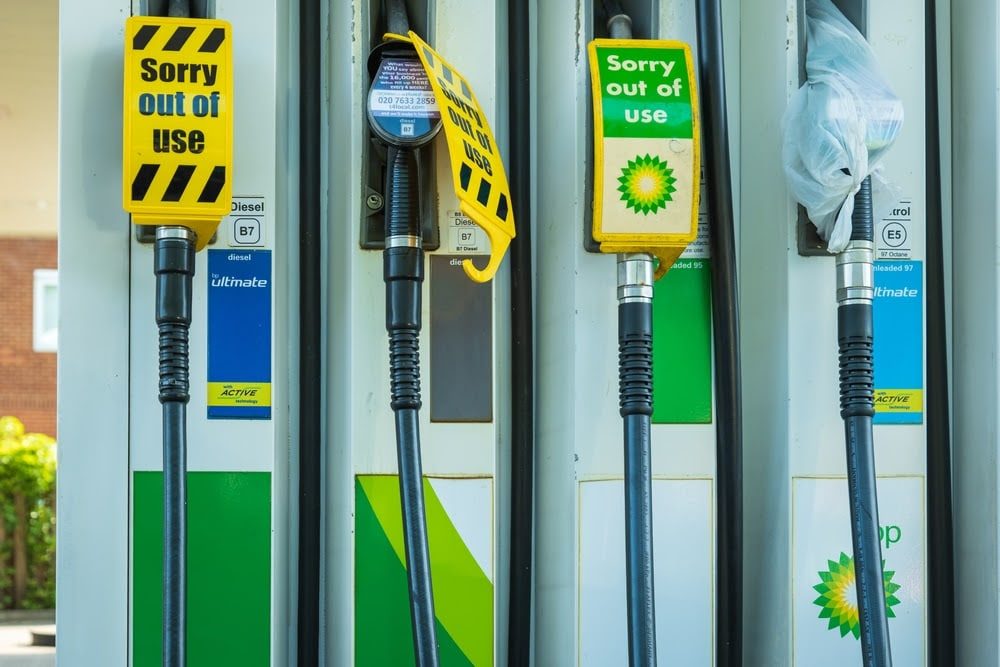WHILE fuel shortage continue to ease, Petrol Retailers Association (PRA) said it’s latest survey this week showed 12% of filling stations in London and the South East are still dry, while 17% have just one grade of fuel.
While 71% of filling stations in this region have both grades, compared to 90 per cent outside London and the South East.
Brian Madderson, Chairman of PRA said a recovery was not happening quickly enough. “There needs to be an independent inquiry into the crisis, so that motorists are protected from such acute fuel shortages in the future.
“The return to normal fuel volumes continues to be blighted by the current inept prioritisation policy. There is three times the capacity at filling stations per head of population in the rest of the UK compared to London and the South East. Together with the fact that there are more cars per household in London and the South East, this probably explains why filling stations in the region are running dry more quickly.
“We understand that meetings have taken place between BEIS and specialist hauliers and oil companies. These meetings were supposed to involve information sharing so that deliveries went to the areas where there were acute shortages. The independent dealer network (which numbers 65% of the total) has not had access to any of the information which was supposed to have been shared. We do not know when the deliveries are arriving and we do not know how they are being prioritised.”
A new five point fuel plan for fleets has been launched by FleetCheck as petrol and diesel shortages continue across the country.
Peter Golding, managing director at the fleet management software company, said that the plan contained basic advice that company car and vans operators could adopt quickly and easily, and also longer term suggestions.
“We’ve been discussing internally how we can help fleets through the current crisis and the fact is that there is no easy answer. If drivers simply can’t get hold of the fuel they need, then there is no real solution.
“However, the advice we are providing here should help fleets to maximise mileage from the fuel that they can obtain and also to understand their fuel use better over time, in case similar situations arise in the future.
“There are measures that can be put in place quite easily, such as drivers using their vehicles in a more fuel efficient manner and adopting more fuel efficient driving styles, that can have a really positive and immediate impact on fuel consumption.”
The five point plan is:
1.Encourage more economical driving. Ask employees to drive smoothly by accelerating and braking gently, taking maximum notice of what is happening on the road ahead. Change up early and, as always, stick to the speed limit or lower – drive at 70mph and you’ll use up to 9% more fuel than at 60mph and up to 15% more than at 50mph, according to the AA. always
2.Explain to drivers how to prepare their vehicles. Some simple steps can have a positive impact on fuel consumption. Remove roofracks or other heavy items from vehicles that don’t need to be carried. Only use power-hungry devices such as air conditioning and rear window demisting when needed. Tyre pressures should checked as they can have a significant effect. Also, don’t leave the vehicle running before use.
3.Measure your fuel use. A large number of fleets simply don’t know how much fuel they use overall, per driver or per vehicle. The easiest way to put a monitoring system in place is to buy all petrol and diesel through specialist fuel cards. You can then access the data collected as software-generated reports.
4.Analyse your fuel data. Fleet software provides the means to analyse the information you have gathered – enabling you to identify drivers and vehicles that are not achieving the kind of fuel consumption that you expect.
5.Don’t be afraid to challenge employees. The single largest factor affecting fuel economy in the real world is driver behaviour. A disparity in fuel economy of more than 30% is not unusual between drivers in identical vehicles on similar routes. Let drivers know that they are being monitored, talk to those who seem to be using excess fuel, and offer help and advice.
The fuel shortages have sent car travel in the UK below 90% of pre-pandemic levels for the first time since July. Coronavirus travel statistics show that between Tuesday and Thursday of last week car travel fell as low as 86% of the pre-pandemic normal.
The last time car travel was below 90% was in the last week of July and at 86% in the last week of April.
All road travel, which had been closer to 100% throughout the summer, fell back closer to 90% last week. Light goods vehicle use was down by about 5% and HGV travel down by 2%.
Jack Cousens, the AA’s head of roads polic, said: “Not only did the fuel shortages, which had been managed successfully up until details of a Government meeting with the fuel industry and hauliers were leaked, leave millions of cars having to queue but they had a direct impact on commerce.
“This has been a woeful chapter in a long history of UK drivers being let down or exploited. Electric vehicles with charging at home, supermarkets and so many more places offers a new horizon away from the traumas of the fossil fuel trade.”








